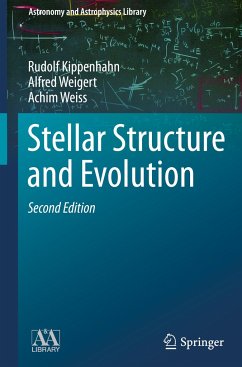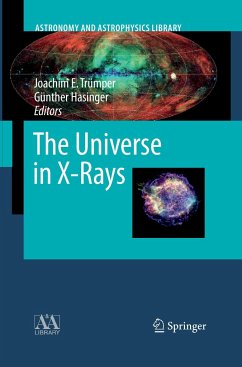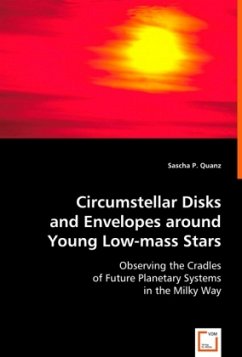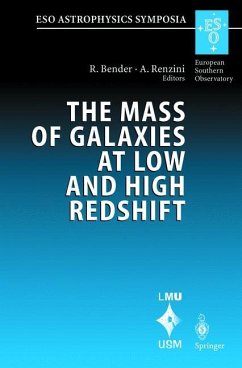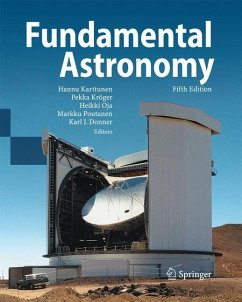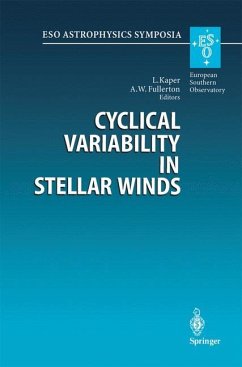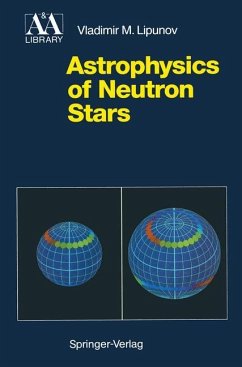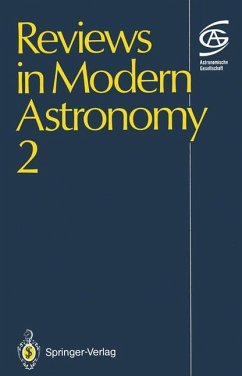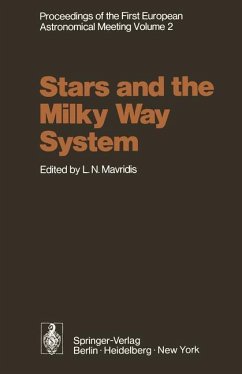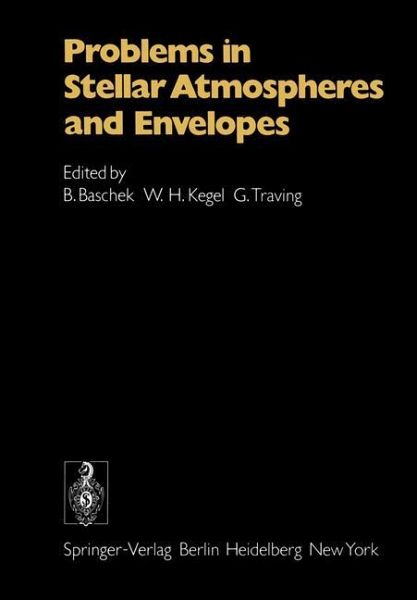
Problems in Stellar Atmospheres and Envelopes
Versandkostenfrei!
Versandfertig in 1-2 Wochen
77,99 €
inkl. MwSt.

PAYBACK Punkte
39 °P sammeln!
The Energy Flux of the Sun A Critical Discussion of Standard Values for the Solar Irradiance.- 1. Introduction.- 2. High Altitude Experiments.- 3. Discussion of the Results.- 4. Results of Measurements in the Far Ultraviolet.- References.- Model Stellar Atmospheres and Heavy Element Abundances.- 1. Introduction.- 2. The Temperature Stratification.- 3. The Gas and Electron Pressures.- 4. The Energy Distribution in the Continuum.- 5. The Line Absorption.- 6. The UBV Colors.- 7. The Temperature Calibrations.- 8. The Bolometric Correction.- 9. Convection and Metal Abundances.- References.- Propert...
The Energy Flux of the Sun A Critical Discussion of Standard Values for the Solar Irradiance.- 1. Introduction.- 2. High Altitude Experiments.- 3. Discussion of the Results.- 4. Results of Measurements in the Far Ultraviolet.- References.- Model Stellar Atmospheres and Heavy Element Abundances.- 1. Introduction.- 2. The Temperature Stratification.- 3. The Gas and Electron Pressures.- 4. The Energy Distribution in the Continuum.- 5. The Line Absorption.- 6. The UBV Colors.- 7. The Temperature Calibrations.- 8. The Bolometric Correction.- 9. Convection and Metal Abundances.- References.- Properties and Problems of Helium Stars.- 1. Introduction.- 2. General Properties.- 3. Spectrum.- 4. Atmospheric Structure.- 5. Individual Obj ects.- 6. Abundances.- 7. Evolution of Model Helium Stars and the (g, Teff) -Diagram.- 8. Empirical (g, Teff) -Diagram.- 9. Variability and Atmospheric Motions.- 10. Conclusion.- References.- Abundance Anomalies in Early-Type Stars.- 1. Introduction.- 2. Problems Related to the Determination of Abundance Anomalies.- 3. The Population I Peculiar B Stars.- 4. The CNO Stars.- 5. The Population II B Stars.- 6. On the Origin of the Ap Phenomenon.- References.- A-Type Horizontal-Branch Stars.- 1. Introduction.- 2. Characteristics of A-Type Atmospheres.- 3. Observational Quantities.- 4. Field Horizontal-Branch Stars.- 5. Horizontal-Branch Stars in Globular Clusters.- 6. Chemical Composition and Mass-Luminosity Relation.- References.- White Dwarfs: Composition, Mass Budget and Galactic Evolution.- 1. Introduction.- 2. The Atmospheres of White Dwarfs.- 3. Composition of Interiors and Envelopes. White-Dwarf Formation.- 4. Interpretation of Atmospheric Composition Differences DA vs. Non-DA Stars.- 5. White Dwarfs: Mass Budget and Galactic Evolution.- References.- Herbig-Haro Objects and T Tauri Nebulae.- 1. Introduction.- 2. Observation of Herbig-Haro Obj ects.- 3. Theory and Theoretical Deductions from the Observations.- 4. The T Tauri Emission Nebula.- References.- Circumstellar Envelopes and Mass Loss of Red Giant Stars.- 1. Introduction.- 2. Circumstellar Absorption Lines.- 3. Dust and Molecules in the Circumstellar Envelopes of Red Giants.- 4. The Dependence of Mass Loss on Basic Stellar Parameters.- 5. Consequences for Stellar Evolution.- References.- Cosmic Masers.- 1. Introduction.- 2. Observational Characteristics.- 3. Radiative Transfer.- 4. Polarization.- 5. Pumping Mechanisms.- 6. Models.- 7. Discussion and Conclusion.- References.- Radio Emission from Stellar and Circumstellar Atmospheres.- 1. Introduction.- 2. Stellar Chromospheres and Coronas.- 3. Solar-Type Activity on Stars.- 4. Flare Stars: UV Cet et al.- 5. Radio Emission from Close Binaries.- 6. Radio Emission from Objects with Circumstellar Envelopes.- 7. X-Ray Stars as Radio Emitters.- 8. The Remaining Stellar Observations.- References.- Line Formation in Turbulent Media.- 1. Introduction.- 2. General Structure of the Problem.- 3. Line Formation in Discontinuous Velocity Fields.- 4. Line Formation in Media with Continuous Velocity Fields.- 5. Solution of the Generalized Transfer Equation.- 6. An Approach to NLTE Line Formation in Turbulent Media.- 7. Concluding Remarks.- References.- Index of Astronomical Objects.






